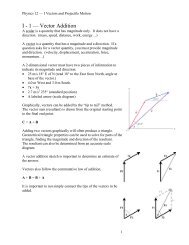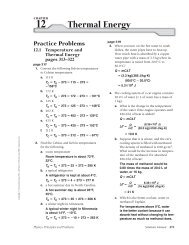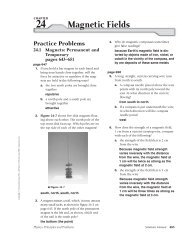Create successful ePaper yourself
Turn your PDF publications into a flip-book with our unique Google optimized e-Paper software.
Halogeno-alkanes usually have a small dipole. Additionally,<br />
the larger halogens (Br and I) have substantial London<br />
Dispersion Forces because of their large size.<br />
These factors will usually give halogeno-alkanes stronger intermolecular<br />
bonds than alkanes, and higher B.P. and M.P.<br />
The small dipole makes them mostly insoluble in water.<br />
Explain why the boiling point of cis and trans -1,2dichloroethane<br />
and cis and trans-2-butene are different.<br />
cis<br />
trans<br />
1,2-dichloroethane<br />
(°C)<br />
b.p.<br />
60<br />
48<br />
1,2-dichloroethane<br />
(°C)<br />
m.p.<br />
-80<br />
-50<br />
2-butene 2-butene<br />
(°C) (°C)<br />
b.p.<br />
4<br />
1<br />
m.p.<br />
-139<br />
-106<br />
Halogeno-alkanes alkanes are characterized as primary (1°),<br />
secondary (2°) or tertiatry (3°).<br />
This designation describes the number of carbons attached to<br />
the halogenated carbon.<br />
1° 2° 3°<br />
X X X<br />
4.2 Halogenation of alkanes<br />
Alkanes are stable molecules. Reactions with alkanes require<br />
high initial energies to break the alkane bonds to start a<br />
reaction.
















